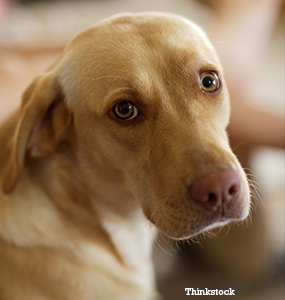
Dr. Phil Zeltzman is a mobile, board-certified surgeon in Allentown, PA. Find him online at www.DrPhilZeltzman.com. He is the co-author of “Walk a Hound, Lose a Pound” (www.WalkaHound.com).
Your family vet probably has lots of incredible stories about items found inside patients’ stomachs and intestines. And certainly, when a vet meets another vet, they love sharing crazy stories.
“Have you read about this snake who ate two light bulbs – whole?”
“How about this Lab who ate 14 golf balls? And the Boxer who swallowed 200 rocks? And the Pit Bull puppy who swallowed an 11 inch steak knife?”
Pets swallow the darndest things: diamond rings, batteries, toys, marbles, machine parts, nails, bones, t-shirts, staples, oh my! As far as I'm concerned (as a surgeon), I remember removing the following foreign bodies from various pets:
- From the esophagus (the tube between the mouth and the stomach): bones, -real or fake-, and chew toys. Interestingly, terriers and small-breed dogs are prone to this specific condition. One dog ate a fish hook that moved out of the esophagus and ended up in a lung. All of these patients required open chest surgery.
- From the stomach: an entire leather leash; pieces of linoleum; a mop; many rocks; tampons; chewed up tennis balls; and recently an entire, unchewed Kong toy the size of your fist! Hair ties are a classic in cats – usually a whole bunch of them at once.
- From the small intestine: countless "linear foreign bodies", i. e. anything that looks like a string. This includes floss, ribbon, rope, rubber bands, bread ties, tinsel, and any similar object that can be batted around and swallowed. Then there were sewing needles, usually attached to a string; toys; corn cobs (a classic); and in the underwear department: socks, G-strings, briefs and panty hose.
- There was also an iguana who ate a piece of wood that got stuck... Interesting surgery - and anesthesia!
- From the large intestine: although foreign bodies that reach the large intestine can often be expelled, this is not always true. We once removed a sock stuck in a dog’s colon
- There were also countless UFOs (Unidentified Foreign Objects), usually mixed with debris, hair, grass and poop. Identifying them is not always easy... Trust me, it’s a smelly job. But somebody’s gotta do it...
- I also remember Susie, an old Lab who had eaten her daily thyroid medication for YEARS by licking some peanut butter off a cheese spreader, held by her owner. Then one day, she decided to lick the sticky paste, and to swallow the whole cheese spreader!
- One golden retriever was a repeat offender: he kept eating rocks in the back yard, and needed several surgeries to open his stomach. I suggested two options to the owners: either get rid of their decorative rocks, or put a wire or cage muzzle on their dog. It is a perfectly humane solution, and it allows the dog to pant and drink.
To keep your pet from making an emergency trip to the animal hospital, please consider the following suggestions:
- Keep all garbage behind a secure door or cabinet.
- Pick up loose change, especially pennies. Older coins can be deadly because they contain zinc, which is toxic.
- Use baby gates or closed doors to create "off-limits" areas for your pet.
- Monitor your dog while walking. Many pets will find irresistible treats, such as corn cobs and walnuts.
- Be aware at all times of possible foreign bodies that a pet might consider playing with or even swallowing, just like with a baby! In other words, pet-proof your house.
- Pick up leftover food, utensils, and other items after eating.
- Cats need to be watched with linear foreign bodies as explained above.
While some of the above examples may seem amusing and the stories usually have a happy ending, it is important to remember that these pets underwent surgery. Theirownerssuffered anguish and worry, and the retrieval of these items was not exactly free.
What surprises pet owners and vets alike is why pets eat these objects in the first place. Some items can be obvious, for example, pieces of glass from a broken spaghetti sauce jar could easily end up in the abdomen of a dog hurrying to finish off the tasty treat. Others are related to a medical condition, such as inflammatory bowel disease. And most remain a complete mystery…
My biggest question is: after swallowing one rock, why on earth would anybody swallow another 199?
If you have any questions or concerns, you should always visit or call your veterinarian – they are your best resource to ensure the health and well-being of your pets.
